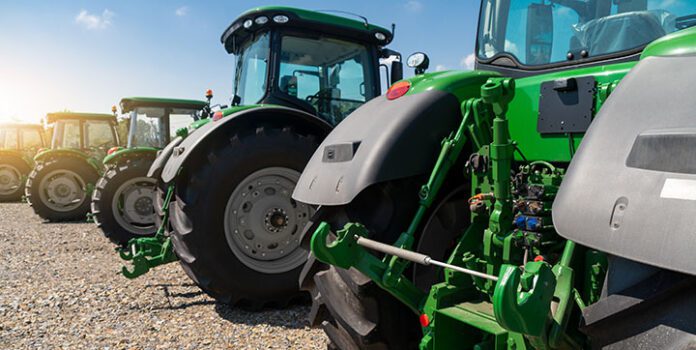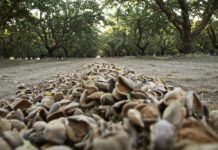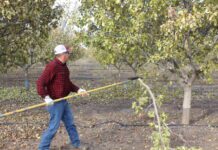
Agriculture is often viewed through a narrow lens, focusing primarily on the work of growers and farmworkers and the agricultural industry. However, the reality is far more complex. Agricultural communities are deeply interconnected, with relationships extending beyond fields and barns. This network includes local communities, families, small businesses and local government budgets.
When agricultural sectors face challenges, the ripple effects are felt across the entire community. Understanding this interconnectedness is crucial for fostering a pro-community approach that ensures we all thrive together.
At the core of agriculture are the growers and farmworkers who toil day and night to produce the food that sustains us. They are a key component of our agricultural communities, but their efforts are not isolated; they are part of a complex system that relies on numerous interdependencies.
They manage the land, make critical decisions about crop rotation, pest control and soil health, and navigate the ever-changing landscape of agricultural policies and market demands. Their work is vital not only for food production but also for the economic stability of rural areas.
But as we look at growers and farmworkers as the hands-on group that drives agricultural productivity, from planting seeds to harvesting crops, the impact of agriculture extends far beyond the fields. Local communities are intricately linked to the agricultural sector, with various areas of community life directly and indirectly influenced by its successes and struggles.
Agriculture is a significant economic driver in many rural areas. The income generated by farming operations supports local economies by creating jobs, generating tax revenues and stimulating demand for goods and services. Local businesses, from equipment suppliers to grocery stores, rely on the spending power of growers and farmworkers, and farms depend on these suppliers and services to keep them operating efficiently.
Small businesses in agricultural communities range from feed stores and equipment repair shops to boutiques and cafes. They cater to the unique needs of growers and residents, ensuring the community remains vibrant and self-sustaining. These businesses are often family-owned, with deep roots in the community, and they play a crucial role in the local economy.
The economic health of agricultural communities is closely tied to local government budgets (tax revenues from agricultural activities fund essential services such as schools, healthcare and infrastructure.) When agriculture thrives, so do local budgets, enabling investments in community development and public services. Conversely, when the agricultural sector faces downturns, local governments often struggle to maintain these services.
No better example of this interdependence can be seen over the past few years as California struggled through our recent drought. As land was taken out of production, local communities suffered alongside growers. Aside from the obvious impact of fallowed land, which meant no work for farmworkers, local businesses that serviced everything from tractors to service trucks were impacted, and restaurants that fed robust communities were empty. Businesses providing basic family health services, from dentists to hospitals, were stressed or closed. The reduction in services resulted in more businesses down the chain being stressed or lost and more stress on remaining farms.
The interconnectedness of agricultural communities is also evident in the social fabric that binds families together and supports communal life.
Growers, farmworkers, local business owners and their employees’ families are all integral parts of local communities. Their children attend the same schools, play on the same sports teams and participate in the same community events as those from non-agricultural backgrounds. Schools in these communities often serve as hubs for social interaction, bringing together diverse groups and fostering a sense of unity. We attend local festivals, farmers’ markets and sporting events. We are truly intertwined economically and socially. This interconnectedness has allowed California to develop the rich and culturally diverse communities we should be proud of that other parts of the country do not enjoy!
For example, consider a small town in Northern California where the local school hosts an annual fall festival showcasing local produce and crafts. These events provide a market for growers and often serve as a significant fundraiser for the school, illustrating the relationship between agriculture and community.

Regulations and Legislation Impact the Entire Community
Agricultural communities are not isolated from broader societal issues and regulations. Changes in agricultural policies, environmental regulations, and market conditions impact more than just the farm; they affect the entire community.
Government policies on agriculture, such as subsidies, tariffs and environmental regulations, can significantly impact all livelihoods.
These policies affect local economies, influencing everything from employment rates to school funding. A comprehensive pro-community approach to policymaking considers these broader impacts, ensuring regulations support the agricultural sector and the entire community.
For instance, water regulations significantly impact local growers’ ability to irrigate their crops, but they also create a community-wide discussion about balancing production, environmental goals and protection, lost jobs and ensuring community wells don’t run dry and are safe, especially during drought cycles.
Another example is how to manage the use of pesticides. Growers are listening to communities and trying to move to lower-risk products whenever feasible. At the same time, communities should work with growers to ensure the government is updating its regulatory structures to provide an array of these products to growers on a timely basis. Additionally, if California believes it can manage pest infestations through prevention, the State should fund these efforts and not leave it to local communities to bear the costs.
Bring the Community Together
We must work to foster resilient and thriving agricultural communities that embrace a pro-community approach that recognizes and nurtures the interconnectedness of all sectors, which is essential. We must collaborate on solutions that bring together growers, farmworkers, local businesses, government officials and community members to address common challenges. This approach encourages dialogue, shared decision-making and collective action, ensuring policies and initiatives benefit the entire community.
The Department of Pesticide Regulation is attempting to bring parties together through its Sustainable Pest Management (SPM) Roadmap. SPM’s goal is to help identify newer lower-risk pesticide products, create a regulatory structure that brings these products to the market, provide communities with knowledge about the regulation of pesticides so they can participate in informed conversations and provide stakeholders with ongoing opportunities to engage in these conversations.
However, this is easier said than done. For this type of initiative to be successful, all community members must be part of the discussion and engage in honest, transparent conversations. These won’t be easy conversations to have, but if communities interact based on what we have in common rather than what our differences are, we can find success.
Growers, farmworkers, families, local businesses and government entities are part of a complex web that sustains rural life and must be part of the solution. Embracing a pro-community approach ensures we all prosper together, united by our shared commitment to the well-being of the entire community. This interconnectedness can be a powerful voice.
Renee Pinel is the president and CEO of Western Plant Health, a Sacramento-based trade association whose member companies promote the environmentally safe and agronomically sound use of their products.















